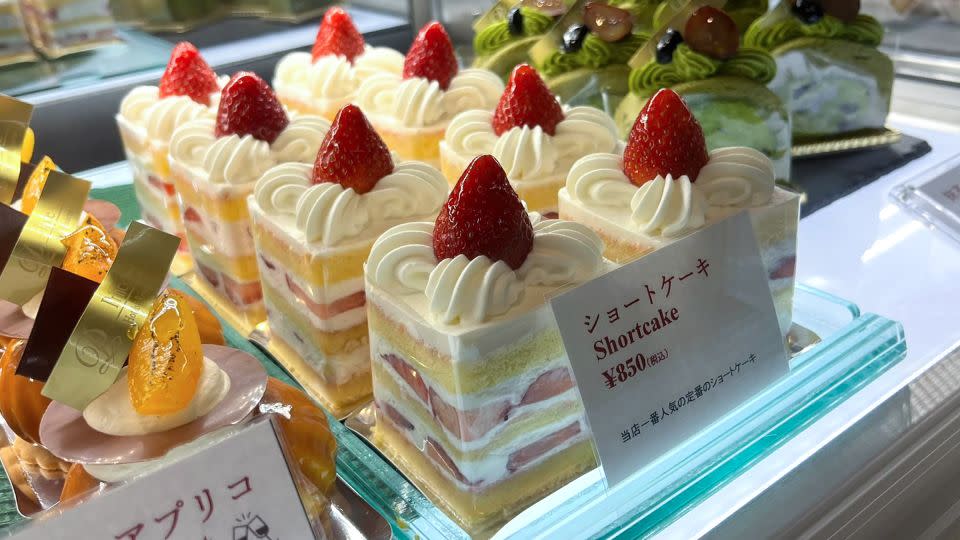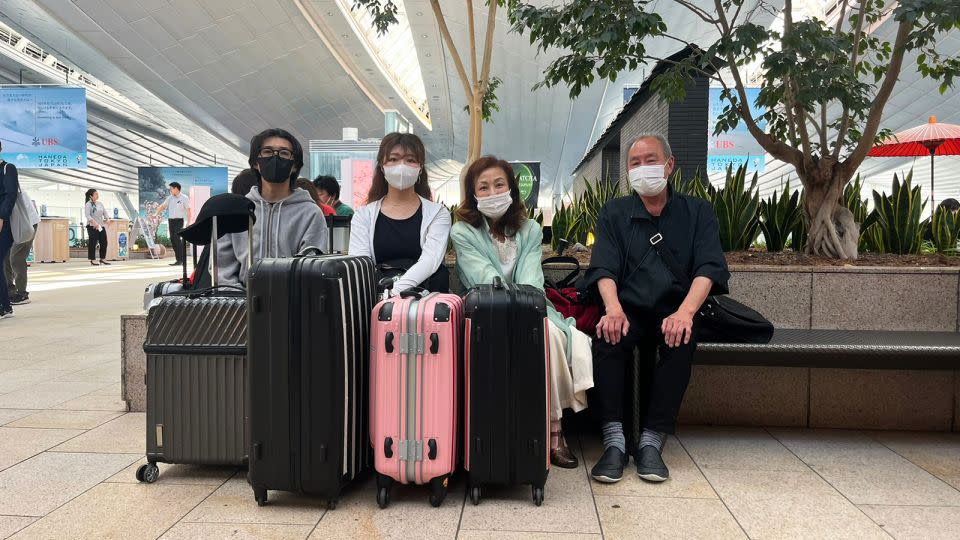Strawberry shortcake and foreign travel: How the yen’s record slump is squeezing the Japanese
From food to travel, it’s hard to find an aspect of life in Japan that hasn’t been affected by its sinking currency.
The yen has been on the skids for years and hit its weakest level since 1990 against the US dollar earlier this week, pressured by expectations of that the US Federal Reserve will have to keep interest rates higher for longer to tame American inflation.
For Hiroko Ishikawa, a second-generation fruit importer in Tokyo, the declining yen has delivered a big hit to her business, which was set up by her father in 1966.
Her company, Japan Fraise, specializes in supplying strawberries, including imports of large berries from the United States. Local farmers also produce strawberries, but not enough to keep up with voracious demand for Japanese-style shortcakes: airy, creamy tiered treats that are considered must-haves at birthdays, holidays and other celebrations.
Ishikawa sells berries to 400 customers, mostly bakeries and confectionaries, across the country. The falling yen has made imported strawberries much more expensive.
Ishikawa estimates she has raised her wholesale prices for imported fruit by 20% over the past two years. To stay competitive, she hasn’t fully passed the cost of the currency swings to her customers, opting to absorb some of the pain herself.
“It’s been a really challenging couple of years,” Ishikawa told CNN. “It’s tough times, and we’re not anticipating any miracles for the next few months. We’re just trying to manage.”
She says her clients are trying to reduce their costs by using smaller or lower-grades of the fruit. Inevitably, some have raised prices, especially since the cost of other ingredients — flour, butter, milk and eggs — have also gone up. The rising cost of imports helped push inflation to 3.1% last year, a 41-year high, according to Nikkei.

After hovering around the 100 level against the greenback for years, the yen started its relentless decline in early 2021. That’s largely because the Bank of Japan (BOJ), the central bank, has maintained extremely low interest rates while the Fed and other central banks have raised borrowing costs to fight inflation.
Higher interest rates in the United States and other countries mean investors can make bigger returns on investments there than they can in Japan. This encourages carry trades, in which investors borrow money in yen to invest it in higher-yielding assets priced in other currencies. That weakens the Japanese currency.
On Monday, the yen briefly briefly weakened to 160 to the US dollar for the first time since 1990, before recovering some ground as the BOJ reportedly spent as much as $59 billion buying the Japanese currency.
“The effectiveness of such interventions is always subject to debate, as they often yield only temporary relief and may fail to address the underlying factors driving currency movements,” Nigel Green, CEO of deVere Group, a financial advisory and asset management firm said shortly after the market gyrations.
There are some benefits …
The yen has lost 10% of its value against the greenback so far this year, after sliding 8% in 2023, according to Refinitiv data. It’s the worst performing currency among the Group of 10 leading industrialized nations in 2024.
Even after the BOJ ended years of negative interest rates with its first hike in 17 years in March, a large gap remains between Japanese and US rates and is set to continue, which is expected to keep the yen weak.
This has yielded a number of benefits for Asia’s second largest economy. A weaker yen has enhanced Japan’s export competitiveness, boosting corporate profits and economic growth.
It also helps make Japan a cheaper destination for travelers. This week, Chinese tourists celebrating the Labor Day holiday are expected to visit Japan in large numbers.
“Tourism is the part of the economy where the yen’s cheapness is most visible, with Chinese tourists paying less for many things than they would at home,” Kit Juckes, a strategist at Societe Generale, wrote in a research note this week.
A Big Mac costs 50% more in the next cheapest G10 currency, the New Zealand dollar, than it does in yen, he added.
Japan was a bright spot for luxury companies such as LVMH. Sales in Japan were up 32% in the first quarter, largely thanks to Chinese tourists shopping there, it said last month.
Besides tourism, a weak yen has helped boost Japan’s stock market to levels not seen since the 1980s and improve its attractiveness as an investment destination for the likes of Warren Buffett.
… and lots of drawbacks
But the falling yen has caused much pain at home and not just for small businesses like Japan Fraise. Many Japanese say foreign travel is no longer a priority, in part because their money doesn’t stretch as far as it once did overseas.
The number of Japanese people traveling abroad last year stood at just 9.62 million, according to a CNN calculation based on data from Japan’s National Tourism Organization. That was less than half of the 20.1 million travellers recorded in pre-pandemic 2019.
“The downsides of a soft currency have been growing over the past couple of years,” Sean Callow, an independent currency strategist based in Sydney, told CNN.
“Japanese consumers accustomed to price stability will also be hurting from rising prices of their favorite imported goods and the surging cost of almost any travel outside Japan,” he said.

At Tokyo’s Haneda Airport, Sato Hitomi, 66, is “bracing” herself for the high cost of traveling to Hawaii with her husband and two adult children. It’s the first, and possibly the last, such vacation for the quartet.
“I quit my nursing job, which I worked for 46 years, this March. I’ve been patient and held off on doing all of the things I wanted to do while also taking care of my parents,” she told CNN on Friday, shortly before flying.
“My son is married and has a new baby and my daughter will get married this fall. We are at a point where things are about to change a lot, and that’s why I wanted to travel. But this is the first and probably the last overseas vacation for us,” she added.
— CNN’s Laura He and Chris Lau contributed reporting
For more CNN news and newsletters create an account at CNN.com

 Yahoo Finance
Yahoo Finance 